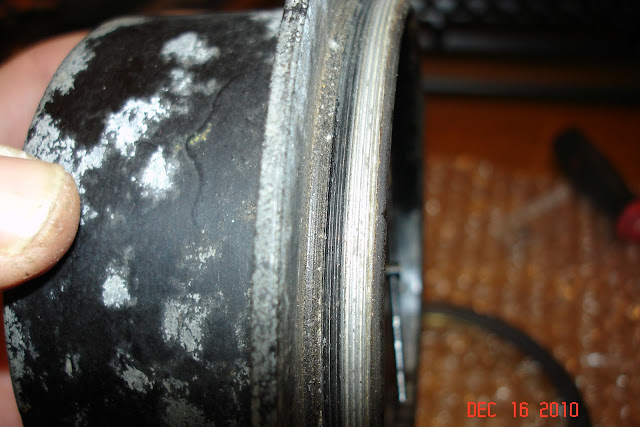We will be off the Cub project for today. There was a request for information on the Foxboro airspeed indicator on the Waco Club forum. I think I have a Foxboro, but could not find it today. I did locate my Bristol Type C airspeed indicator which I think was the predecessor of the Foxboro Company . I think they are identical in design and construction, however I could be wrong. Here is a picture of the Bristol.
As you can see it is a beautiful flange mounted Airspeed indicator with a 4 inch glass face. The radium on the 30,60, 90 , 120, 150 has long since lost it's "glow". Where it chips off it leaves a nice gold finish underneath. The question was about the glass face. Since this instrument came to me without the glass I can only estimate the original configuration. The aluminum bezel ring unscrews in a conventional manner. Using the paint witness mark on the main case , I estimate the thickness of the glass and any gasket between the bezel and glass at 0.125 inches. The diameter of the glass should be 4.000 inches.
I believe that this early airspeed operates differently than what we know today. The back is marked just like airspeed instruments are marked today.
However, the "S" stands for suction and not static as is the case today. I have read that at the time this was made, thin metal bellows technology had not evolved to the point where they could get enough deflection with pitot pressure alone. A combination pitot/venturi sensor was used to provide the necessary pressure differential. Here is a picture of a set that was for sale on Ebay a while back. Of course it went rich.
When you examine the instrument you can see that it operates opposite to what we know today. In this picture you can see that the pitot pressure fills the instrument case and effects the outside of the operating bellows. The suction pressure is applied to the inside of the bellows and the resulting differential operates the indicator needle. This shot shows the internal plumbing.
You can see that the "P" side simply vents into the case, while the "S" side has the small copper tube that I assume vents to the bellows. This design makes the sealing of the case very important and there is and "O" ring seal on the front edge.
I measure this O ring at 3.975 OD and 3.760 ID. that would make it about 0.125 diameter. Remember this one is 90 years old so measure your case and get an o ring to fit. Tom I hope this answers your questions, let me know what you find out on the glass, I need one too. Check your instrument before ordering, as this picture shows the type E Foxboro has a slightly different bezel configuration.








No comments:
Post a Comment